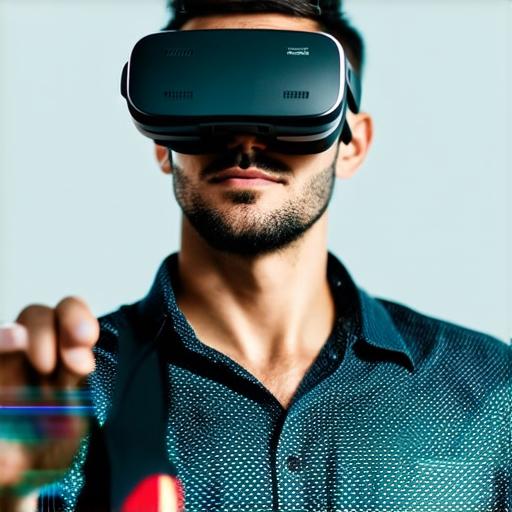
What does the “pass-through” feature do in a virtual reality headset?
Virtual reality technology has been advancing rapidly in recent years, and one of the most important features of VR headsets is the “pass-through” option. This feature allows users to view their real-world surroundings while wearing the headset, which can greatly enhance their overall experience when using the device.
The pass-through feature is designed to provide a more immersive experience for users by allowing them to interact with both their physical environment and digital content simultaneously. This means that while wearing the headset, users can see and interact with their surroundings as if they were not wearing it at all.
The pass-through feature can also be useful in situations where a user needs to quickly switch between real-world tasks and virtual reality tasks.
One of the main benefits of the pass-through feature is that it allows developers to create more realistic and interactive environments for users to explore. For example, a virtual reality game developer could use the pass-through feature to create a game environment that blends seamlessly with the user’s physical surroundings, allowing them to interact with objects in both worlds.
This type of immersive experience can greatly enhance the overall enjoyment and engagement of the user.
Another benefit of the pass-through feature is that it allows developers to create more intuitive and user-friendly interfaces for their applications. By providing users with a clear view of their physical surroundings while they are using the application, developers can make it easier for users to navigate and interact with the digital content.
This type of interface can greatly improve the overall user experience and reduce frustration.
One case study that demonstrates the potential of the pass-through feature is the use of VR in healthcare. In this application, the pass-through feature allows doctors and patients to view each other’s physical surroundings while they are using the headset.
This allows for more effective communication and collaboration between the doctor and patient, as well as providing a more immersive and engaging experience for the patient. For example, a patient could use the pass-through feature to view their medical records and communicate with their doctor while wearing the headset, allowing for a more personalized and effective healthcare experience.
While there are many benefits to using the pass-through feature in VR, there are also some potential downsides to consider. For example, if the user’s physical surroundings are not optimized for VR use, this can lead to a less immersive and enjoyable experience.

Additionally, if the pass-through feature is used excessively, it can lead to eye strain and fatigue. However, these potential downsides should not deter developers from using the pass-through feature in their applications.
In conclusion, the pass-through feature in a VR headset allows developers to create more realistic and interactive environments for users to explore, as well as more intuitive and user-friendly interfaces. While there are some potential downsides to consider, the benefits of the pass-through feature make it a valuable tool for virtual reality developers looking to create engaging and immersive experiences for their users.


